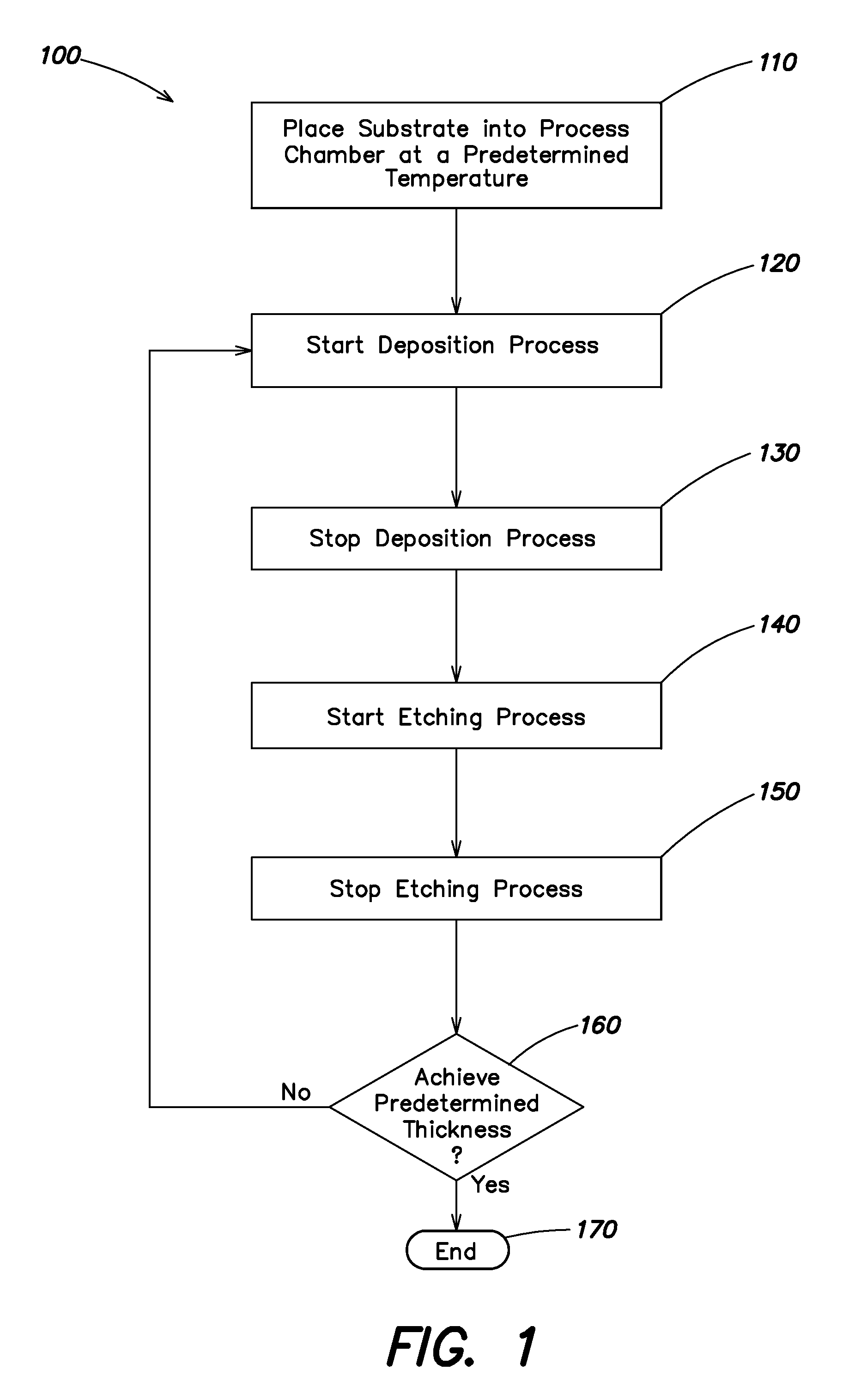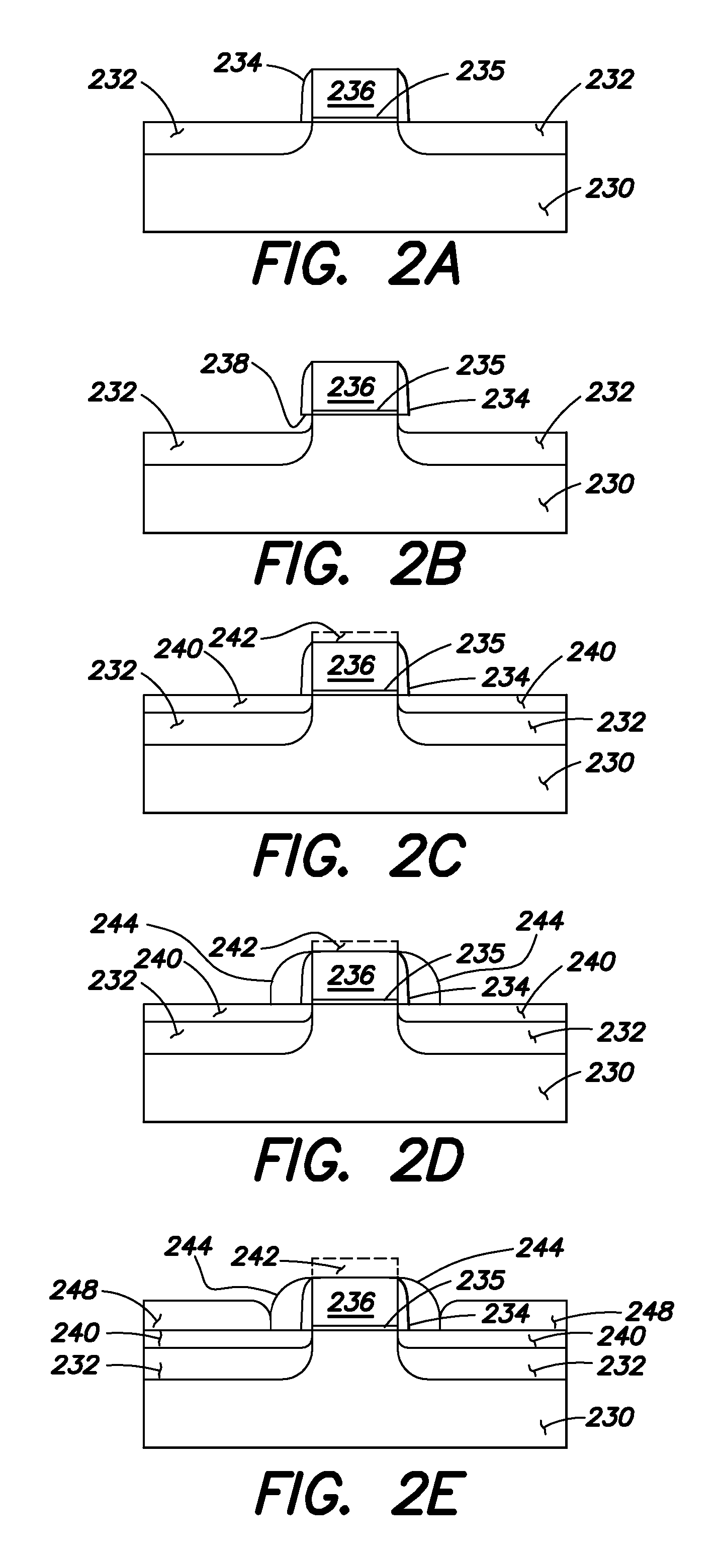Carbon precursors for use during silicon epitaxial film formation
a technology of carbon precursors and epitaxy materials, applied in the direction of crystal growth process, polycrystalline material growth, chemically reactive gases, etc., can solve the problems of epitaxy material deposition, difficult production of ultra shallow source/drain junctions, and limited, or no, deposition of polycrystalline materials
- Summary
- Abstract
- Description
- Claims
- Application Information
AI Technical Summary
Benefits of technology
Problems solved by technology
Method used
Image
Examples
example 1
Selective Epitaxy of Silicon with Cl2 Etchant
[0098] The substrate was placed into a process chamber heated and maintained at 550° C. The process chamber was maintained at a pressure of about 15 Torr. The substrate surface was exposed to a flow of deposition gas containing silane with a flow rate of 100 sccm and nitrogen with a flow rate of 25 slm for 7 seconds. The substrate was thereafter exposed to an etching gas containing chlorine gas with a flow rate of 20 sccm and nitrogen with a flow rate of 25 slm for 10 seconds. A cycle of deposition gas exposure and etching gas exposure was repeated 50 times to form an epitaxially grown silicon layer on the exposed monocrystalline portion of the substrate. The silicon epitaxial layer had a thickness of about 1,000 Å.
example 2
Selective Epitaxy of Silicon Germanium with Cl2 Etchant
[0099] The substrate was placed into a process chamber heated and maintained at 550° C. The process chamber was maintained at a pressure of about 15 Torr. The substrate surface was exposed to a flow of deposition gas containing silane with a flow rate of 100 sccm, germane with a flow rate of 3 sccm and nitrogen with a flow rate of 25 slm for 8 seconds. The substrate was thereafter exposed to an etching gas containing chlorine gas with a flow rate of 20 sccm and nitrogen with a flow rate of 25 μm for 10 seconds. A cycle of deposition gas exposure and etching gas exposure was repeated 50 times to form an epitaxially grown silicon-containing layer on the exposed monocrystalline portion of the substrate. The silicon-containing epitaxial layer had a thickness of about 1,700 Å.
example 3
Selective Epitaxy of Silicon Germanium with Cl2 Etchant
[0100] The substrate was placed into a process chamber heated and maintained at 550° C. The process chamber was maintained at a pressure of about 15 Torr. The substrate surface was exposed to a flow of deposition gas containing silane with a flow rate of 100 sccm and nitrogen with a flow rate of 25 slm for 7 seconds. The substrate surface was thereafter exposed to a flow of second deposition gas containing germane with a flow rate of 5 sccm and nitrogen with a flow rate of 25 slm for 7 seconds. The substrate was exposed to an etching gas containing chlorine gas with a flow rate of 20 sccm and nitrogen with a flow rate of 25 slm for 10 seconds. A cycle of deposition gas exposure and etching gas exposure was repeated 50 times to form an epitaxially grown silicon-containing layer on the exposed monocrystalline portion of the substrate. The silicon-containing epitaxial layer had a thickness of about 1,800 Å.
PUM
 Login to View More
Login to View More Abstract
Description
Claims
Application Information
 Login to View More
Login to View More - R&D
- Intellectual Property
- Life Sciences
- Materials
- Tech Scout
- Unparalleled Data Quality
- Higher Quality Content
- 60% Fewer Hallucinations
Browse by: Latest US Patents, China's latest patents, Technical Efficacy Thesaurus, Application Domain, Technology Topic, Popular Technical Reports.
© 2025 PatSnap. All rights reserved.Legal|Privacy policy|Modern Slavery Act Transparency Statement|Sitemap|About US| Contact US: help@patsnap.com



